

MIKE from MODEL RAILWAYS UNLIMITED takes a look at the history behind our recently released Sussex Coal Wagons in the Gaugemaster Collection.
I saw that Gaugemaster had commissioned two special wagons inspired by Sussex based coal traders. This was part of the Gaugemaster Collection.
So back in March, 2019, on my way home from work, I popped in and obtained a pair.
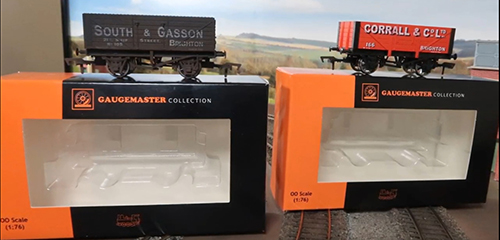
We have the 7 Plank South & Gasson number 105 Brighton and the 5 Plank Wagon Corrall & Co Ltd number 166 also of Brighton.
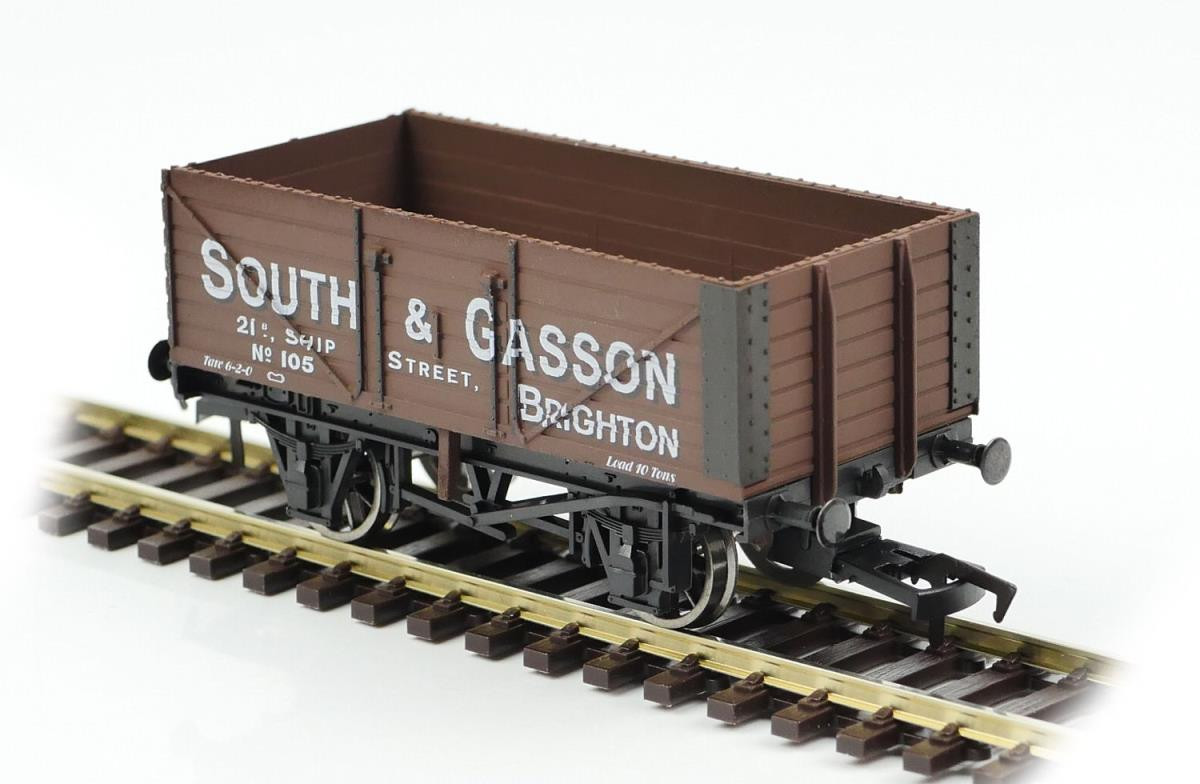
7 Plank 'South & Gasson' Number 105 Brighton
South & Gasson’s wagon, whose company office was based in Ship Street Brighton, among other locations in Brighton city, was, by all accounts, a small coal merchant, carrier, and insurance agent.
Other addresses connected with the company were: 47 Hollingbury Road, 10 Clarence Square, 1 A Kensington Street, and, the address shown on the wagon, 21a Ship Street.
It appears that this 7 plank open wagon was delivered to them in June 1910 and carried the number 105. It is believed that this was the only wagon they had.
Compared with Corrall & Co, who had 240 plus wagons, it shows that South & Gasson were quite a small concern.
The era of operation would have been, LBS&CR without doubt.
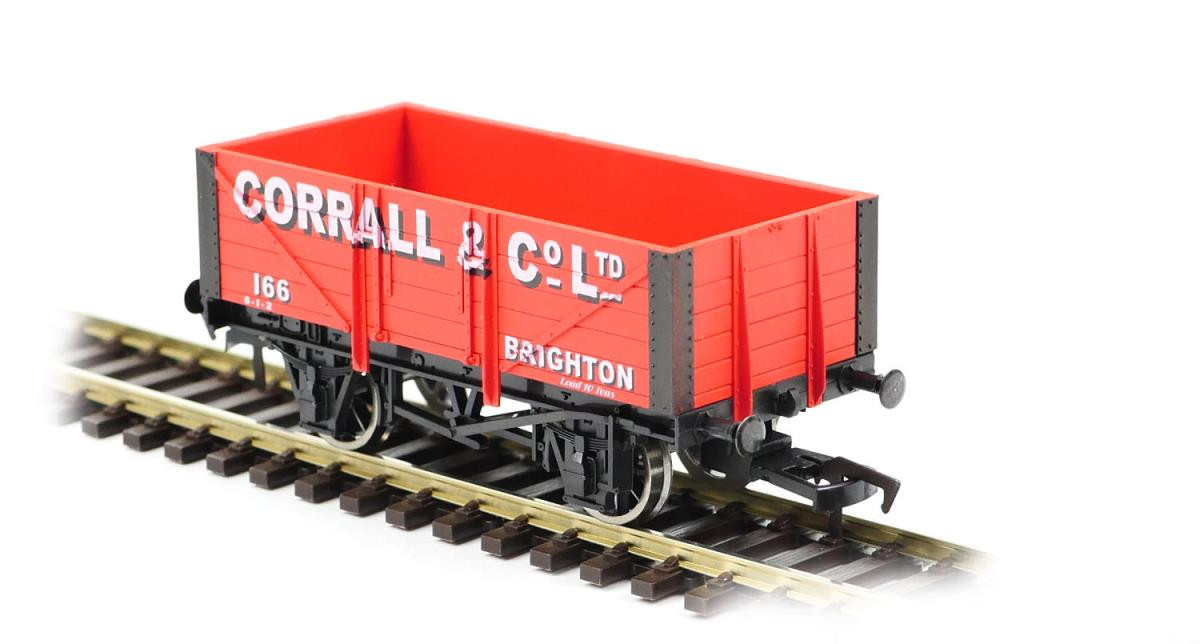
5 Plank Wagon 'Corrall & Co Ltd' Number 166 Brighton
Now we turn to the 5 Plank Wagon Corrall & Co Ltd number 166 Brighton.
James Corrall started out as a Brighton greengrocer in 1856, but soon expanded his business interest as a coal merchant. He eventually co-owned many ships, which transported coal to the south coast, and, as rail transport expanded, he acquired a large fleet of both 5 and 7 plank open wagons.
James died in 1871 aged just 49 and the businesses passed to his wife Mary.
Less than six months after his death, Mary entered into an agreement on 1st April 1872 with two other coal merchants to carry on the business under the banner of Corrall & Co. The two men in question were Daniel Hollyman and Thomas Paul Cattley.
Corralls main office was based at 40 Queen’s Road, Brighton.
In 1872 Corralls also had offices at both Brighton Railway Station and at Prince Albert Street plus there were other branch offices, agencies, yards or wharves at Brighton, Hove, Penge, Norwood Junction, Leatherhead, and Forest Hill.
In 1877 Corralls entered into an agreement with GR Turner, of Langley Mill near Nottingham, to repair, as often as necessary, their 240 railway wagons. It is evident that top quality materials were to be used. For example, it was mandated that the best English oak and the best steel were to be used on the wagons and, as a finishing touch, Corralls wagons were to be given two coats of best red paint.
Corralls are still in business today in Hove, as a supplier of coal, making them one of the oldest established businesses in the Brighton area.
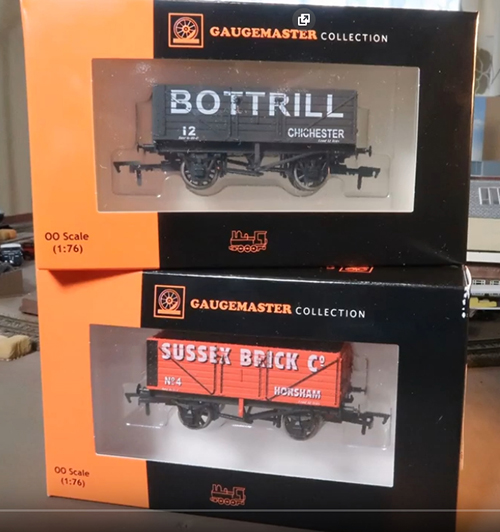
At the start of November, 2019 two more wagons arrived. First up is Bottrill Chichester, which is a 7 plank 1923 wagon that belonged to this local Chichester firm.

7 Plank Wagon 'Bottrill' Number 12 Chichester
Chichester is located on the south coast of the UK between Portsmouth and Worthing, at one time it had extensive railway yards and sidings. Now, not so much.
Robert Bottrill was a coal merchant, with address of 8 Southgate (Rugby House) and the Railway Station yard.
Their adverts proclaimed "8 Southgate. Mr Robert Bottrill Coal merchant, & colliery agent, haulage contractor & furniture remover by up-to-date methods, motor tractors. Telephone 179 Chichester".
Robert’s Rugby House, in Southgate is now lost under the A286. He also owned a business in Bognor. History notes that in 1897 The "Chichester City Band" was first formed by Mr Robert Bottrill who owned a coal business in Chichester and Bognor Regis.
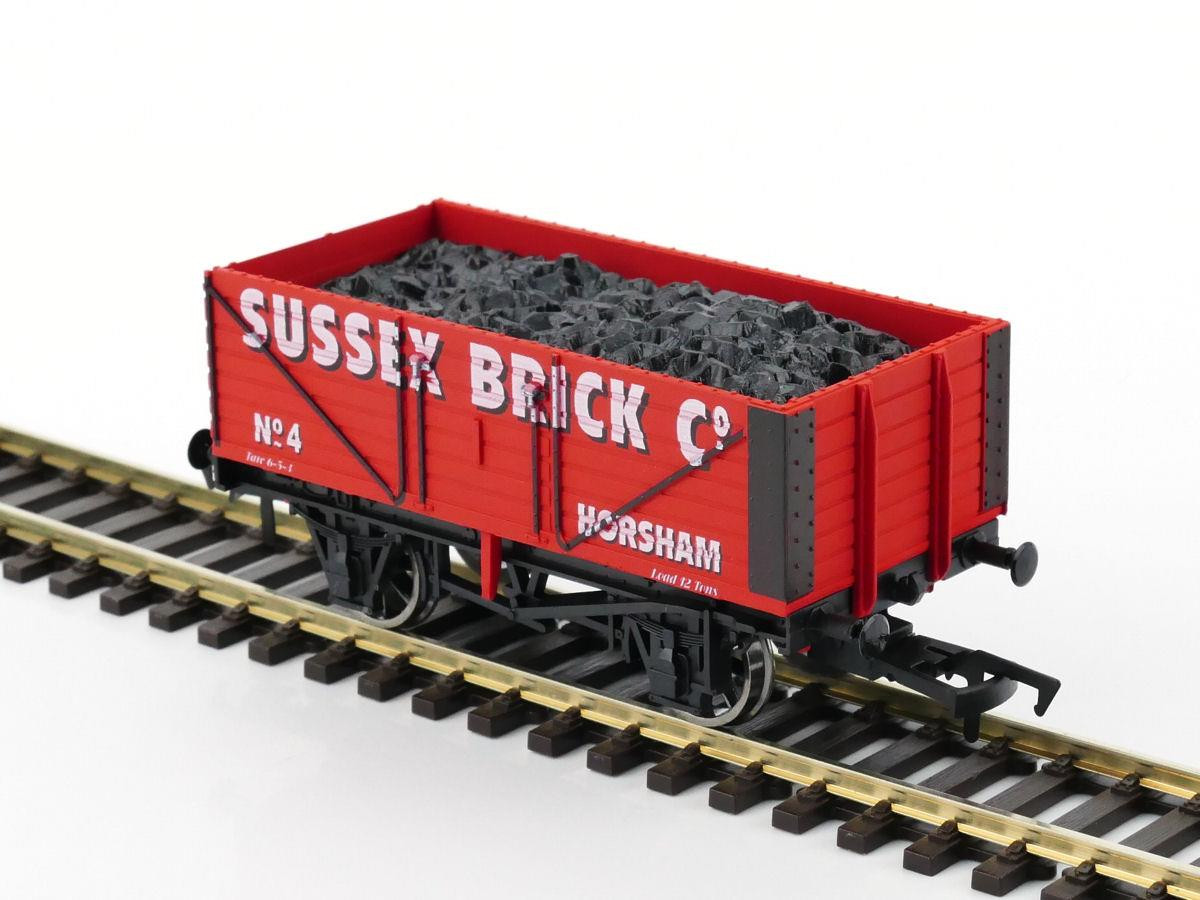
7 Plank Wagon 'Sussex Brick Co.' Number 4 Horsham
Next comes Sussex Brick Company Horsham.
The site was located on the Horsham to Dorking line, near to Warnham, and was initially purchased and developed by the Peters family in 1888. Soon after, it was successively merged with the Sussex Brick Co. Ltd. and, later, with the Sussex and Dorking United Brick Companies.
A new siding was installed on the down-line which imported coal for the running of the kilns. The sidings on the eastern side of the railway line extended close to the three kiln sheds in order that the finished products could be efficiently loaded onto rolling stock. The site was at Langhurstwood Road. Horsham.
Historic mapping indicates that, towards the end of the 19th century, the site lay within open agricultural fields, flanked to the west by the Dorking, Horsham, and Shoreham Line of the London Brighton & South Coast Railway.
Before the site was redeveloped into a recycling site, the works were owned by Wealden Brickworks.
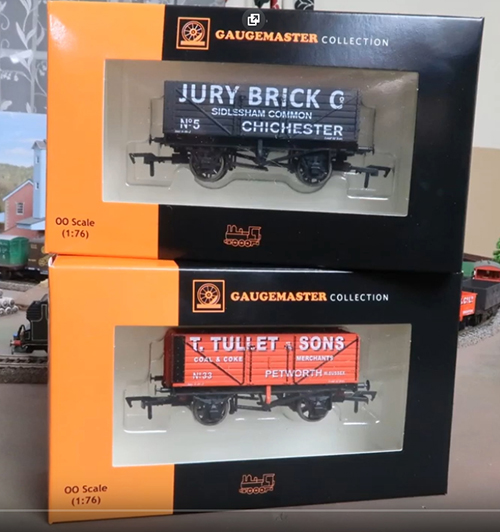
Hot on the heels of the last two wagons, on the 9th November, 2019, two more arrived.
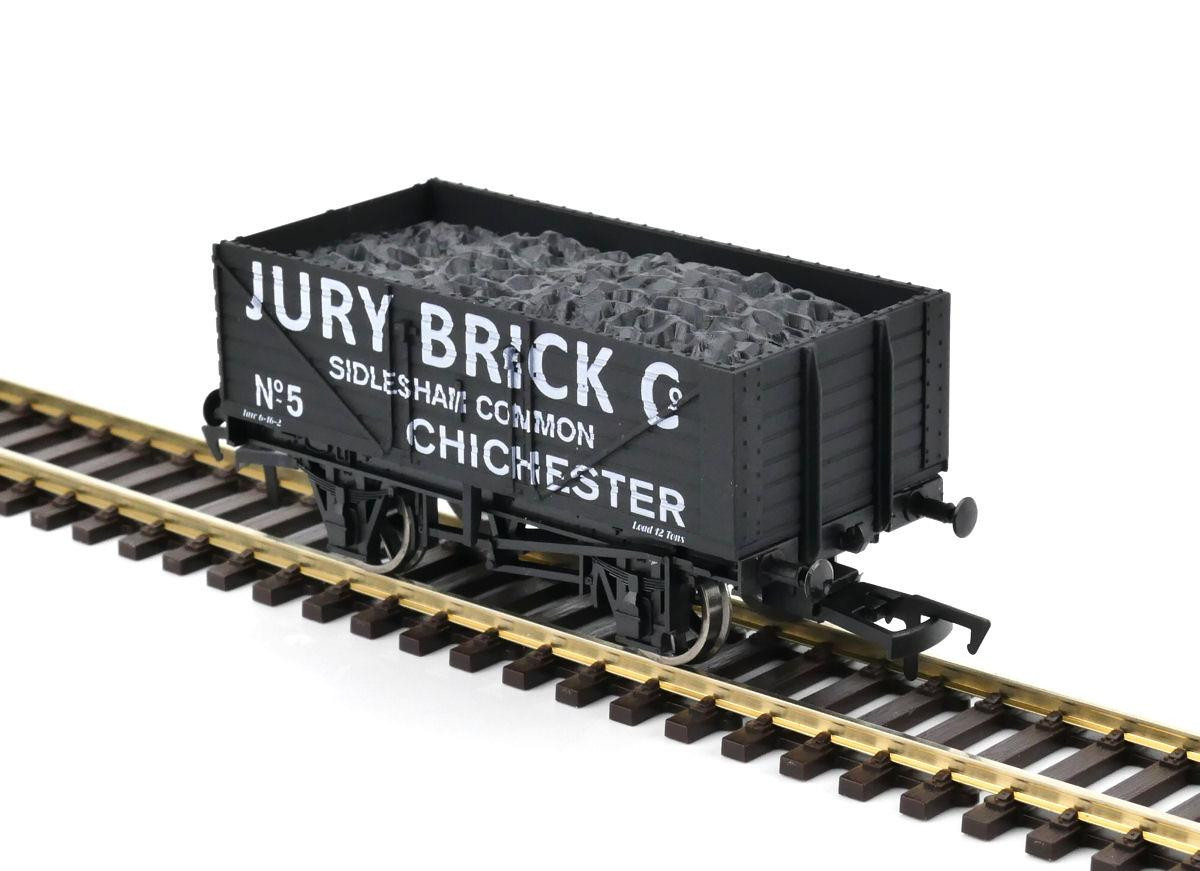
7 Plank Wagon 'Jury Brick Co.' Number 5 Chichester
The Jury Brick Company. What did I find out?
The West Sussex Railway was a standard gauge light railway between Chichester and Selsey.
The line, which opened in 1897, was also known as Hundred of Manhood and Selsey Tramway. It was opened as a rail tramway in order to avoid having to comply with regulations that managed conventional railways in the United Kingdom. The line was built under the auspices of the light railway entrepreneur, Colonel Stephens, who would later manage the line as the West Sussex Railway (Tramway Section).
There were two brick works - one at Selsey Bridge, operated by the Trojan Company, and one near Hunston.
It seems that the company, we are interested in, was located at, what is now known as, The Old Coal Yard, Jury Lane, Siddlesham Common, near Chichester (as marked on the wagon).
It seems far too much of a coincidence that the lane was and is still called Jury Lane and that the area was a brick works and then a coal yard. In fact, you can still buy coal there.
These wagons purport to be a 1923 design meaning that if it did work on the Selsey Tramway it only had a short time as this shut in 1935, which may be why it’s been so hard to discover this wagon’s history. It seems to me very possible that Jury carried on using its wagons from Chichester yard and maybe moving coal via road to the brickworks.
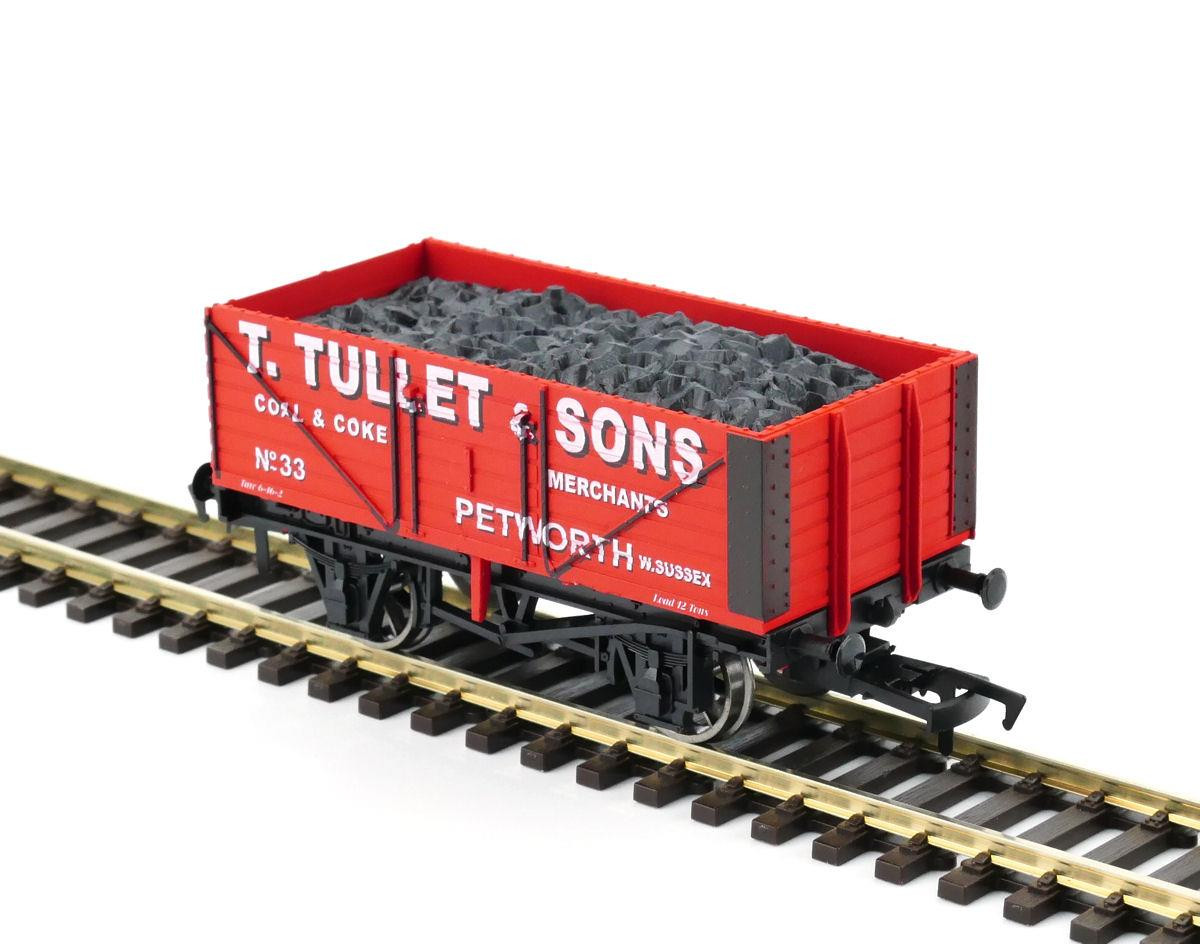
7 Plank Wagon 'T. Tullet & Sons.' Number 33 Petworth
On to our next wagon and this one has caused me no end of trouble trying to find out its history! T Tullet & Sons Petworth.
Petworth Railway Station was located nearly two miles from the town of Petworth in West Sussex, England.
It was located on the former London, Brighton, and South Coast Railway single track Pulborough to Midhurst branch line. It had a single platform, and a passing loop for freight trains, together with a signal box and goods facilities.
The line was opened to here on 10 October 1859 and extended westwards to Midhurst in 1866. The main station building was rebuilt in about 1892.
The station was closed to passengers by the Southern Region of British Railways on 5 February 1955 and to freight traffic on 20 May 1966. Sometime after this, the station building was converted to a guest house and a number of former Pullman lounge cars converted to camping coaches have been relocated here from Cornwall as sleeping accommodation.
That’s all well and good, but what about Mr T Tullet and his sons? Try as I might I could find no evidence of this coal merchant in Petworth, and there was even confusion about how many letter T’s ended Tullett.
However, some judicious research by friends produced the following - I located "Thomas Tullett, 9th Dec 1878, Divorced, Coal Merchant" and "Thomas Albert Tullett, 28 Jan 1905, Single, Coal Merchant". Kelly's Directory of 1909 tells us there was a Thomas Tullett, Coal Dealer at 139 Westbourne Street, Hove.
In 1939 it is suggested that there was a T Tullet at Fleet House, Petworth, which really confused me as this address was wrong! However, the breakthrough came when a lady found a newspaper advert dated 1955 for Tullet & Sons, Fleet House, Fittleworth (Telephone 15) with Tullet spelt with just one T as per the wagon.
Thomas Tullett died in April 1963 aged 84. Furthermore, a Thomas Albert Tullett died in July 1978 aged 72. Meaning this was one of the sons? - Thomas Tullett of Fleet Bungalow, Fittleworth, Sussex, died on 3rd April, 1963.
So, it seems fairly sure that Tullet & Sons operated their wagons from Petworth railway yard and the confusion around the number of Ts was simply a typo by someone recording deaths.
Thanks goodness that's mostly solved. However, I would love to come across photographic evidence of both these wagons in the suggested locations.
Later on, Keith Goatcher updated me that, "as a boy I remember Tullet & Sons operating from the yard at Fittleworth Station, this would have been late 50s early 60s".
And so we come to the last Sussex Coal traders wagon in the Gaugemaster Collection (so far! – Ed).
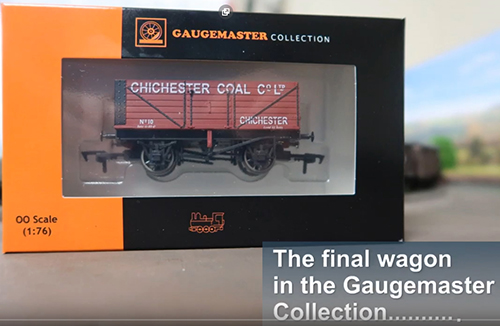
Arriving with me on November 15th, 2019 was Chichester Coal Company.
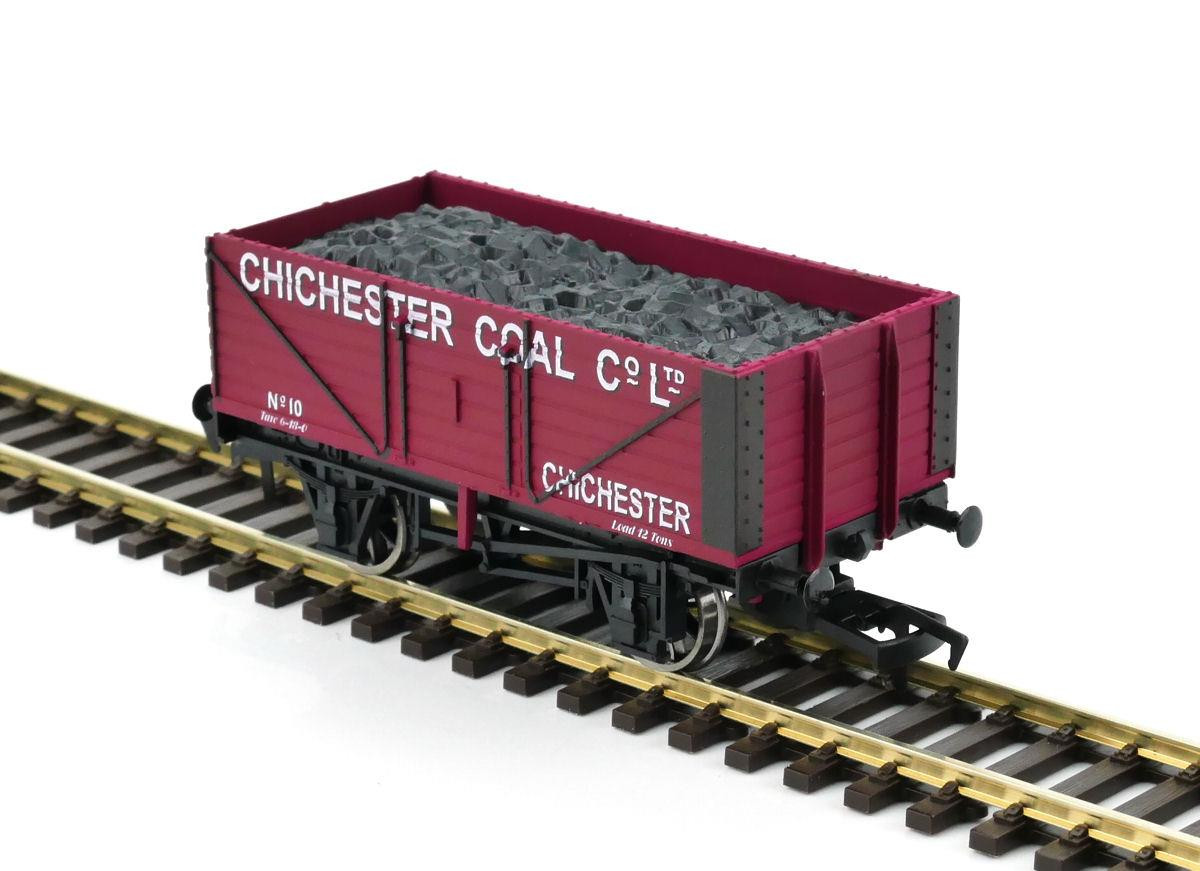
7 Plank Wagon 'Chichester Coal Co.Ltd.' Number 10 Chichester
Our train now consists of seven 1923 specification open 7 plank wagons. Let’s have a quick look at what I have found out about the Chichester Coal Company.
Obviously, the company was based in Chichester, but with property in Longford Road, Bognor Regis as well. The Business Directory, Chichester 1914 records show, 18 Southgate. Chichester Coal Co. (Lewis & Co. proprietor), coal & coke.
Happily, the Chichester address is still standing and is now a very fine sweet shop.
I also found a reference to Inventories of fixtures, fittings and rolling stock at 27, Southgate, Chichester (Messrs. Lewis & Co. (Sussex) Ltd.) between Jan. 1905 - Feb. 1913. Now, I am not sure what this was about, the property in question appears to be the Fountain Pub!
Once again, Chichester Coal Company would have used the railway yards at Chichester for its wagons, there was a coal yard to the south of the station where the car park is now, but the view today seems to deny this memory.
Responding to my request for information, a helpful person recalls it was still being used by them in the 60s, by then of course the wagon we are looking at would have been long gone, having been pooled no doubt in WW2.
So there we have it; seven lovely Sussex based wagons from Gaugemaster, each is based on a 1923 design. However, it is clear that, at least some of, the companies would have been using wagons of a similar type way back in time. I have been pleased that my YouTube reviews of the wagons have been well received and you can find a playlist of all of them below:
More details, running, and local views can be found in the videos.
Thanks to Gaugemaster for asking me to write up this account of my research
Mike from Model Railways Unlimited
Model Railways Unlimited - YouTube
Each of these wagons is available as both a pristine or weathered version, and will be available in N, OO, and O Scale. Numbers are limited though, so check with your local model shop!